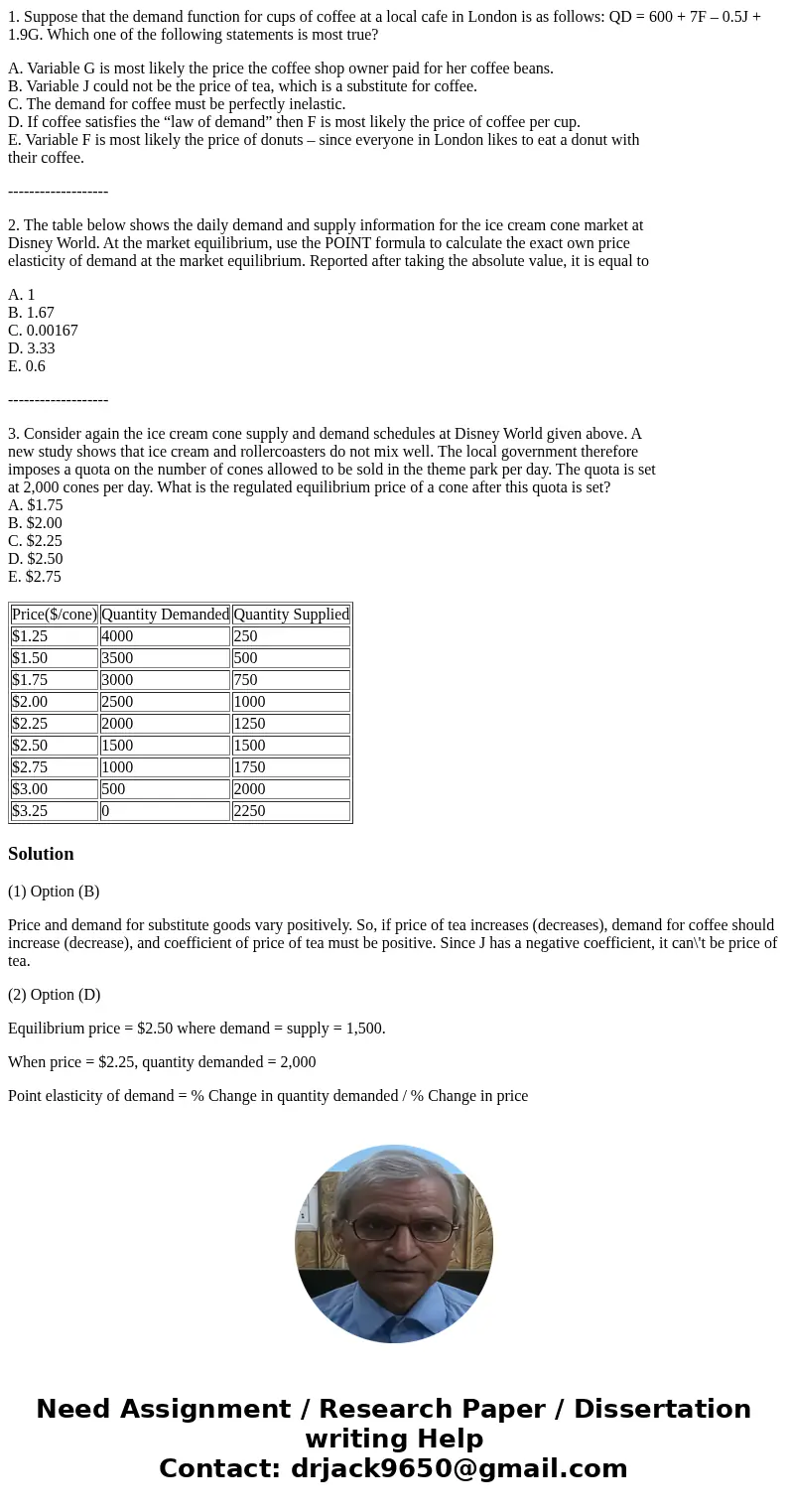1 Suppose that the demand function for cups of coffee at a l
1. Suppose that the demand function for cups of coffee at a local cafe in London is as follows: QD = 600 + 7F – 0.5J + 1.9G. Which one of the following statements is most true?
A. Variable G is most likely the price the coffee shop owner paid for her coffee beans.
B. Variable J could not be the price of tea, which is a substitute for coffee.
C. The demand for coffee must be perfectly inelastic.
D. If coffee satisfies the “law of demand” then F is most likely the price of coffee per cup.
E. Variable F is most likely the price of donuts – since everyone in London likes to eat a donut with
their coffee.
-------------------
2. The table below shows the daily demand and supply information for the ice cream cone market at
Disney World. At the market equilibrium, use the POINT formula to calculate the exact own price
elasticity of demand at the market equilibrium. Reported after taking the absolute value, it is equal to
A. 1
B. 1.67
C. 0.00167
D. 3.33
E. 0.6
-------------------
3. Consider again the ice cream cone supply and demand schedules at Disney World given above. A
new study shows that ice cream and rollercoasters do not mix well. The local government therefore
imposes a quota on the number of cones allowed to be sold in the theme park per day. The quota is set
at 2,000 cones per day. What is the regulated equilibrium price of a cone after this quota is set?
A. $1.75
B. $2.00
C. $2.25
D. $2.50
E. $2.75
| Price($/cone) | Quantity Demanded | Quantity Supplied |
| $1.25 | 4000 | 250 |
| $1.50 | 3500 | 500 |
| $1.75 | 3000 | 750 |
| $2.00 | 2500 | 1000 |
| $2.25 | 2000 | 1250 |
| $2.50 | 1500 | 1500 |
| $2.75 | 1000 | 1750 |
| $3.00 | 500 | 2000 |
| $3.25 | 0 | 2250 |
Solution
(1) Option (B)
Price and demand for substitute goods vary positively. So, if price of tea increases (decreases), demand for coffee should increase (decrease), and coefficient of price of tea must be positive. Since J has a negative coefficient, it can\'t be price of tea.
(2) Option (D)
Equilibrium price = $2.50 where demand = supply = 1,500.
When price = $2.25, quantity demanded = 2,000
Point elasticity of demand = % Change in quantity demanded / % Change in price
= [(2,000 - 1,500) / 1,500] / $[(2.25 - 2.5) / 2.5]
= 0.33 / - 0.10
= - 3.33
Absolute value is 3.33.
(3) Option (C)
When quota is 2,000, price is $2.25 because at this price, demand = 2,000 = quota amount.

 Homework Sourse
Homework Sourse